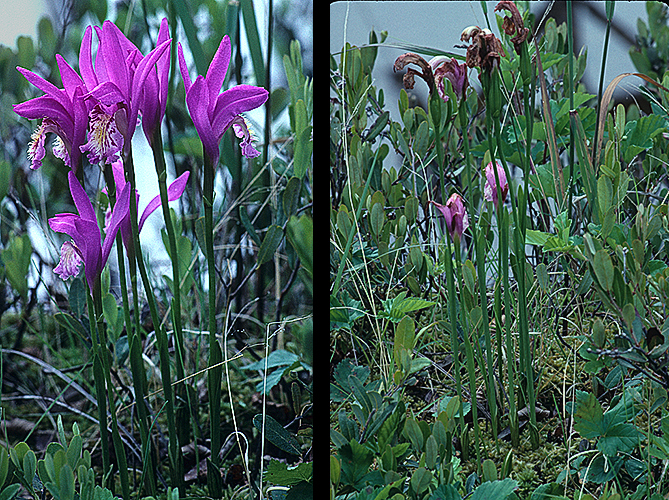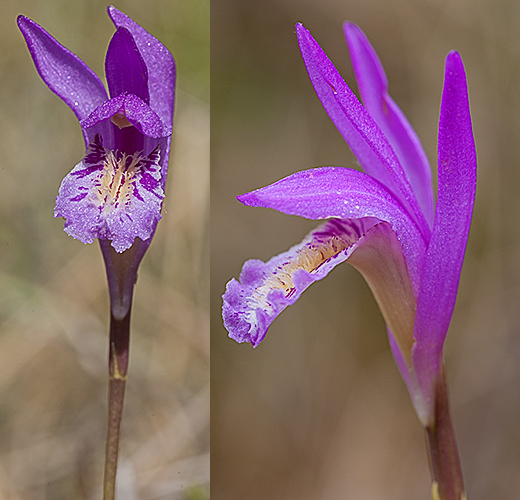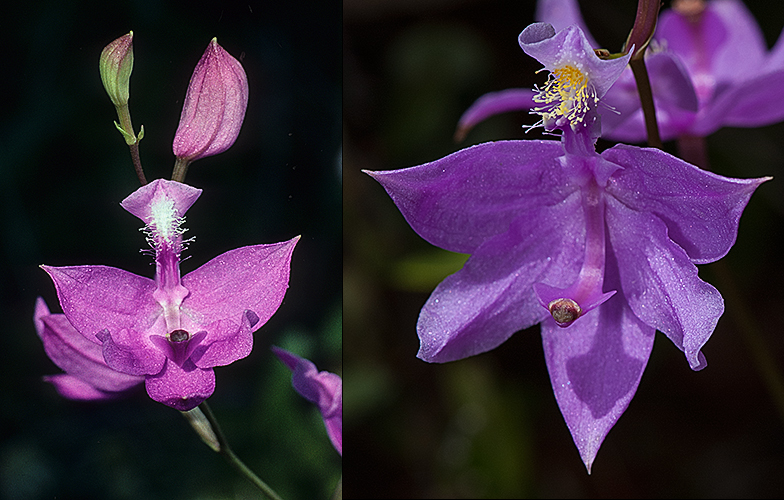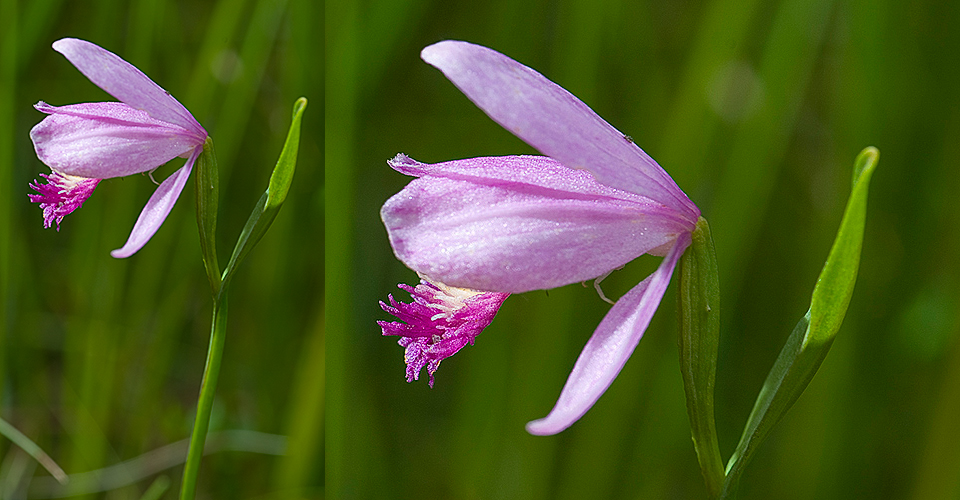In the Great Lakes Region the bog big three are Swamp Dragon (Arethusa bulbosa), Rose Pogonia (Pogonia ophioglossoides), and Grass-pink (Calopogon tuberosus). You can sometimes find all three in an undisturbed bog or fen. They are all sun-lovers and their colonies disappear if they become shaded. Swamp Dragon flowers first and Rose Pogonia is the last to flower but their blooming times overlap. I have seen Swamp Dragon and Grass-pink in flower on Memorial Day. Grass-pink and Rose Pogonia flower during July in the Upper Peninsula. Flowering time varies with the season, location, and genetics of the population.
I learned about Swamp Dragon as a boy from a Kodachrome slide my dad had taken. I saw my first one in 1974 during a family vacation to Michigan’s Keweenaw Peninsula. I jumped across a roadside ditch and over a dozen blooming plants.
I have found plants almost every year since then. They send up a single flower in late spring or early summer and the leaves develop just after the flower fades. A given population varies in size from year to year. One that I know in the eastern Upper Peninsula has fluctuated between 5 plants and 10,000 plants. Fred Case observed that individual plants are short lived, usually less than 5 years. If an early frost occurs, and plants fail to set seed for a couple of years in a row then the population drops.
Morris and Eames in their classic Our Wild Orchids write, “To us it has always been, quite startling, a face watching and aware. We shall never forget the moment when our eyes first fell on its blossom in the lonely depths of a sphagnum bog.” I will always remember the first time I found this plant.I love this plant and currently have three colonies under annual observation. However, it is becoming rarer, because of habitat loss from invasive species such as Glossy Buckthorn (Frangula alnus)and wetland development.
Grass-pink is the largest of the bog big three. Under good conditions it can reach 60cm (2-feet) in height. It is normally easy to spot this plant. It is Michigan’s only non-respuinated orchid, meaning that the lip of the flower is uppermost. Other Michigan orchids have a 180-degree twist to the ovary. I find more Grass-pinks than Swamp Dragons. The Grass-pink populations fluctuate less than Swamp Dragons and are normally longer lived. I know of one station that my father photographed in the 1940s that still exists.
Rose Pogonia is the easiest member of the big three to find but it is not common. I don’t remember my first colony but it was probably the old station at Hart Lake in Bald Mountain Recreation Area that has since been overgrown. A tall plant of this species is 15cm (6-inches). It spreads by rootlets so when you find this plant there often are several hundred plants. It has a single leaf on the stem.
The big three are flowering now. Get out, get your feet wet, and have a look.
Copyright 2014 by Donald Drife
Webpage Michigan Nature Guy
Follow MichiganNatureGuy on Facebook




